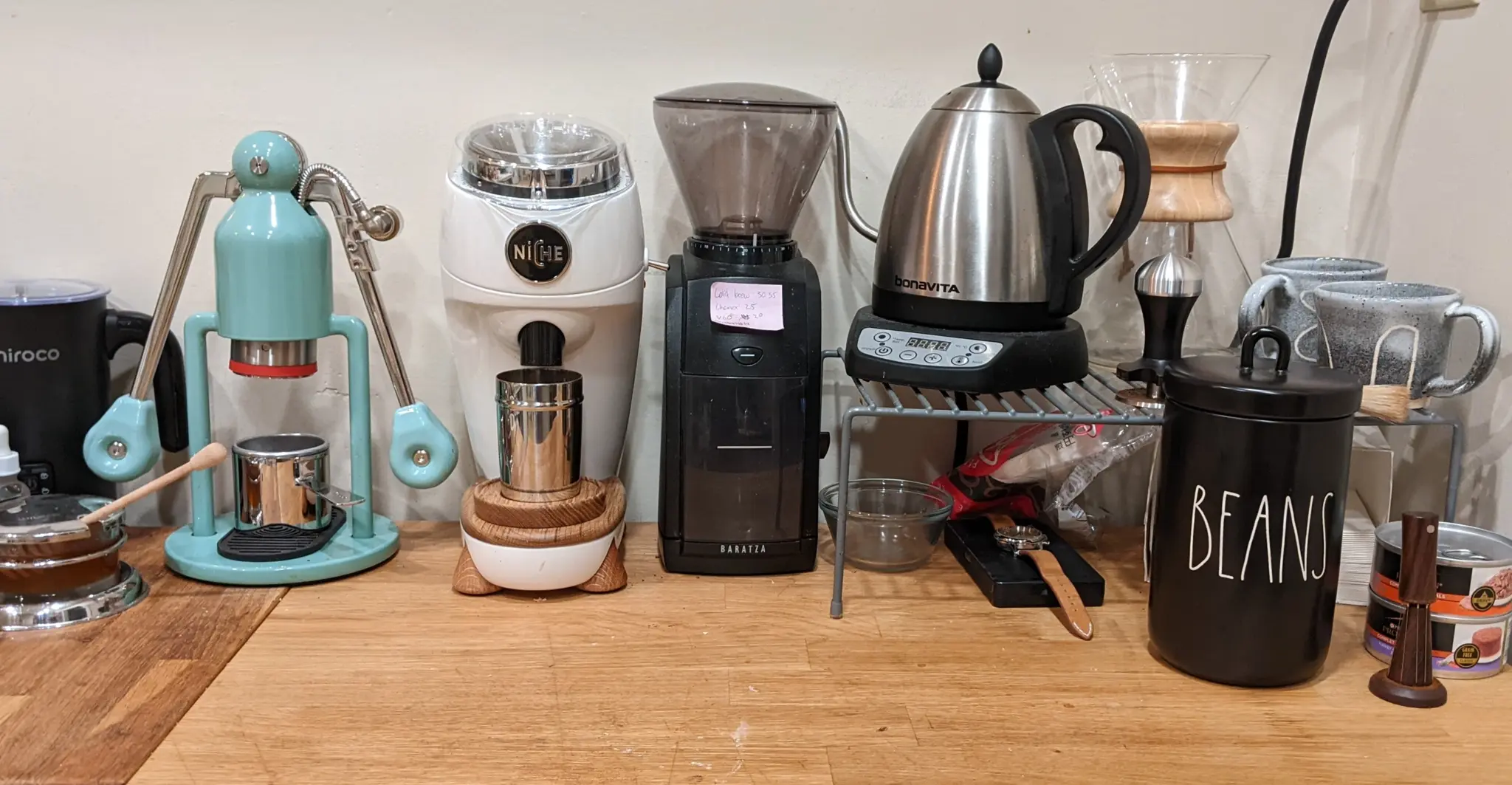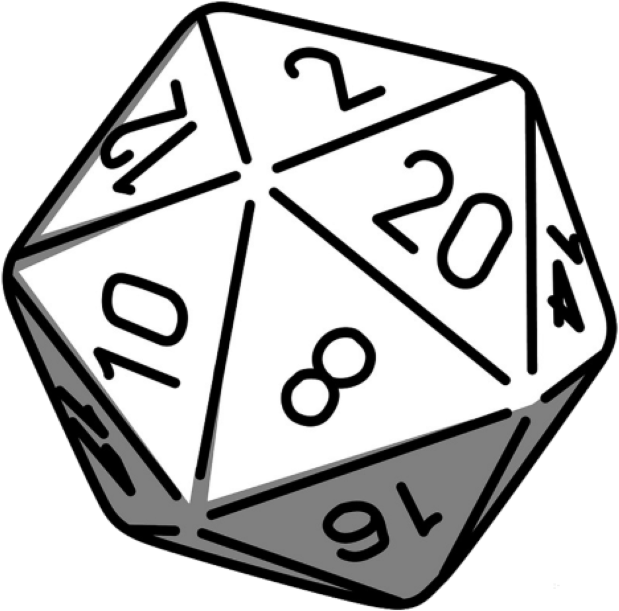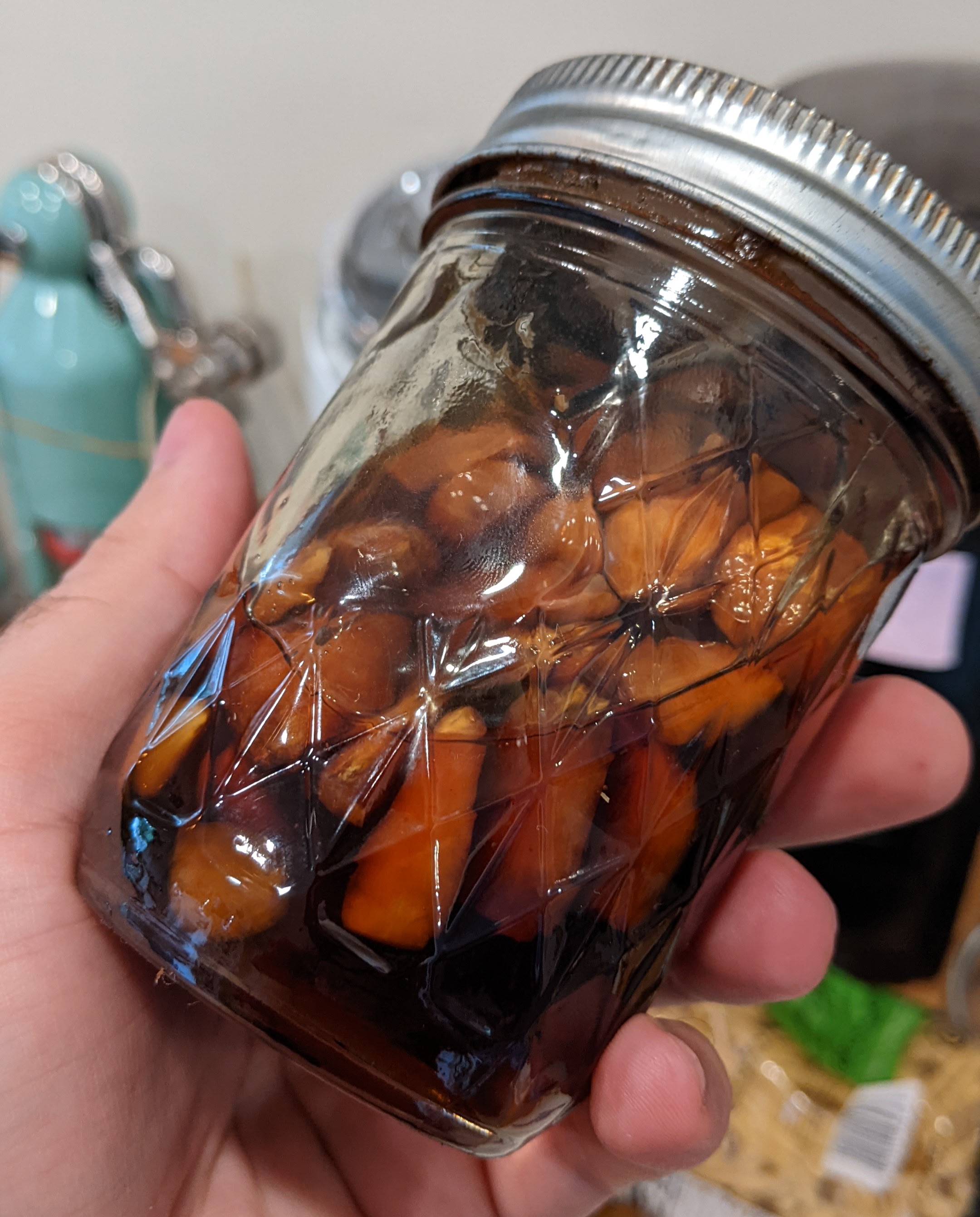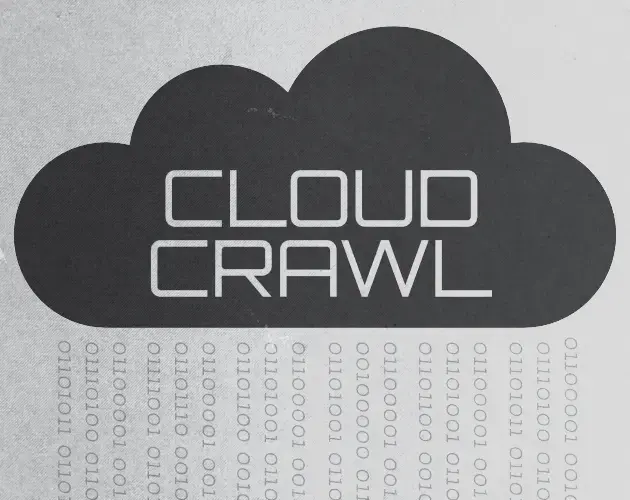Photonics Engineer by day, indie RPG writer by night, especially interested in open/CC games.
See my stuff here: http://awkwardturtle.games
- 7 Posts
- 31 Comments

 5·1 year ago
5·1 year agoThank you! I have next to nil artistic ability, so I actually really surprised myself by managing to make something I actually liked with these labels.

 6·1 year ago
6·1 year agoYeah, I don’t know if that tracks. Wingspan has sold more than 1.3 million copies (as of September 2021) which is way way way more than the average board game sells.
I’d far more believe that they couldn’t keep up with production than they were intentionally limiting supply.

 4·1 year ago
4·1 year agoOoo, fantastic. I’ve been doing sugar extractions of lemon zest for a mead recently, and we tried drying and blitzing the zests after filtering.
For us the powder was nice (partly because it got a bit candied during the process) but fairly mild in taste. I think it could still absolutely be fun to use to sprinkle on desserts of drinks, for visuals if nothing else.

 1·1 year ago
1·1 year agoHaving recently tried the filtering thing, it’s still a roll of the dice unless you’re using the much more expensive professional grade filters.
It does get your mead clear as hell though, and removes a ton of off flavors.

 2·1 year ago
2·1 year agoOur kettle actually partially died a few months ago, had a long debate about what we should replace it with before I realized the contacts on the base had just gotten bent out of place.
A buddy of mine printed the robot mittens for me, and even managed to track down a paint that nearly perfectly matches the color. I absolutely love them. How do you like the metal ones?

 2·1 year ago
2·1 year agoNice! A surprising amount of overlap with out own coffee station!


 7·1 year ago
7·1 year agoFrom my understanding espresso beans do tend to be roasted darker to help increase extraction. I know that at least for my manual espresso press I need to use a significantly different recipe to get a nice shot out of light roasted beans.
Broadly though, I do think the cultural idea of espresso is that it’s a small, super intense cup of coffee which in turn implies it being very bitter as that’s the main coffee flavor people can imagine being intensified. Especially when you consider that a lot of people’s idea of espresso likely comes from pod machines which, in my experience, tend to make very bitter shots.
I was genuinely shocked the first time I had a shot of a espresso from an actual coffee shop and the predominant flavor was sour not bitter.
So, yeah, I do think it’s very common for people to associate espresso with dark and bitter coffee.> I said it sounds like you just haven’t had good espresso
Edit: FWIW, if you’re looking to actually talk to someone about all this, lines like, “I said it sounds like you just haven’t had good espresso,” is not a great way to engender a good conversation.

 4·1 year ago
4·1 year agoI’m no expert, been doing it as a hobby for about five years now, but from my own experience I’ll make a few notes:
- Be prepared to wait for your mead to age out, especially if you go high ABV and pure honey with no additions. If you want fast turnaround do sweet, low ABV meads or make beer instead.
- Time forgives all sins. If your mead tastes like ass, simply wait long enough and it’ll probably taste great. Sometimes that time frame is 2 or 3 years, but it’ll (probably) get there eventually. Rack into a new vessel every once in a while as long as you’re seeing sediment collect at the bottom.
- Adding nutrients, especially adding it in steps during primary, makes a huge difference. As in, being able to drink your mead in 4 months rather than a year+. I’ve found the easiest way to do it is with Fermaid O and the TOSNA Calculator. There are more complex nutrient calculators out there if you want to get deeper into the math.
- I’ve also started adding O2 during primary fermentation, although I started it around the same time I started using yeast nutrient so I can’t really tell you how much of an impact it makes.
- I’ve personally found that doing one gallon batches just isn’t worth it, for all that I see it commonly online. Unless you’re doing low ABV mead, it’s going to take time to age out into something nice. At which point if it’s good, you’ll be disappointed you didn’t do a larger batch. It takes more setup equipment and 5+ gallon glass carboys are pricey, but if you have a local homebrew store getting a basic fermentation bucket (often found in beer homebrew kits) is very worth it. That also goes with getting actual airlocks which are cheap enough that I think it’s worth picking up to take less risks with your mead
- See if you can get your honey locally, and if they’ll cut you a deal on buying in bulk. If you can’t, webstaurantstore.com has surprisingly reasonable prices for delivering 5 gallon buckets of honey.
- Making your wine sweeter is a good way to make it taste good faster without having to age as long, but do give dry meads a try! They’re very nice!
- I have filtered mead (using basic plate filters and gravity), and it improved the taste and clarity more than I was expecting. No idea how successful it was at stabilizing it because I didn’t backsweeten afterwards. From my research, if you want 100% guaranteed stabilization from filtering you’re looking at some pretty expensive equipment and filters. By the same token the science behind chemical stabilization as talked about in the OP is not as cut and dry as I was hoping, so I don’t know that there are good guarantees anywhere for this.
- Edit: Do research first if you want to attempt a bochet. Boiling honey expands to 3x the original volume, and superhot molten sugar is one of the most dangerous things you can have splattering around in your kitchen!

 1·1 year ago
1·1 year agoRather than a specific system or style, I think the important thing is what gets you and your players excited. Pick a genre or theme that you are your players are into, then find a system that matches that. Once you get into it a bit more you can start digging into different styles of RPGs because you’ll have more context for what it all means and some idea of what you all like.
I like rules light systems because they’ve got a shorter “time to table”, but if everyone is very excited to play DnD, then DnD works because it’ll keep everyone motivated and engaged.
Some ideas:
Sci fi horror game along the lines of Alien: Mothership
Hardscrabble, fools forced to delve into dangerous dungeons and weird woods to make a living: Cairn
Grannies solving murder mysteries a la Miss Marple: Brindlewood Bay
A gang of thieves in a Dishonored-esque whale oil powered city: Blades in the Dark.
A gang of thieves flying a space ship in a star wars or firefly styled galaxy: Scum and Villainy
A doomed world undergoing heavy metal apocalypses: MÖRK BORG, or CY_BORG for the cyberpunk version of that.
Buffy and friends taking down vampire threats, or Mulder trying to find the truth that’s out there: Monster of the Week
Personally I’ve had really good luck introducing new players with Mausritter. The physical version is gives people a tactile card based inventory, the digital version is totally free. It’s super easy for people to get into the head space of tiny mice! There are also tons of fantastic modules to run which makes your job as a DM a lot easier.
This comment got a bit away from me, but I’ve run and played a ton of different systems, so if you have some idea of what you think you and your players will be into I can maybe point you in a more specific direction.

 2·1 year ago
2·1 year agoMausritter is also great at getting people into the “old school” adventuring mindset. It’s easy for people to get that they’re a tiny moues, so they need to be careful, be clever, and run away from dangerous situations.
Plus it’s got fantastic first and third party adventures to run.
Might not be sufficiently fantasy magic for the brief though?

 2·1 year ago
2·1 year agoPepcorn is actually and unironically very good.
That looks great! We actually don’t add any flavorings into the mix outside of the salt + sugar, we did originally but found out we really liked the very smokey without anything added. I should really go back and try out some different options to see what’s out there though.
We also usually smoke with “neighbor maple”. Which is to say anytime a storm comes through a branches fall out of the big maple tree in our neighbor’s lawn, we take it, chop it up, and smoke stuff with it.
Slicing is both the easiest and most annoying part of the process for me. A few years ago we managed to get a hold of a second hand commercial deli slicer. It works incredibly well, as you might imagine, but then I discovered why you usually don’t have commercial equipment in your home. I use it maybe once every couple months, and it takes about as long to clean the dang thing as it does to actually slice something on it. I’m sure it makes sense in an actual butcher or deli where you’re using it all day, but for me I do 15 minutes of slicing and then have 15 minutes of cleaning off pork fat. It sure does make nice even slices of bacon though.
That sounds fantastic.

 5·1 year ago
5·1 year agoHere’s my lovely girl Desdemona taking a nap on my leg (bonus selfie shot of myself):

And my strange gremlin of a son, Darien:

Maybe not as zoomed in as requested, but I can’t get new ones as they’re both currently hiding under a bed due to the contractors in the house.

 5·1 year ago
5·1 year agoI played Earth for the second time Sunday night (after my usual RPG night was cancelled/postponed), this time with 4 rather than my first game with 2.
It’s a really interesting game, but I’m not entirely sure how I feel about it yet. I originally took a look because it kept coming up in discussions around Ark Nova (which I tried and disliked), Wingspan, Terraforming Mars, etc.
I can see why people say Ark Nova is a bad comparison (I agree, very little overlap) but absolutely see why people compare it to Wingspan so often. So many of the mechanics in Earth seem to be directly pulled from Wingspan and then vaguely re-themed to be plant based. It really feels like they started with Wingspan as a base design, and then reworked it into their own concept.
Pros:
- Simultaneous/shared turns a la Race for the Galaxy work super well in a wingspan-like game. Getting to run your engine on other people’s turns is so much nicer than sitting and waiting for them to deliberate over choices.
- The flexibility of getting to build your own tableau with almost no limitations is a lot of fun, as opposed to building off of an existing engine framework.
- The shared turns have made it (so far) so I never felt like I was truly pinched for resources. I wasn’t taking actions out of desperation to catch up, I was picking what I felt would get me closer to my actual goals.
- Despite the singleton deck, it never felt like I was unable to find cards with the synergies or qualities I needed.
- There were a good number of high payoff “build around” cards that came up, which is something I always enjoy in a board game.
Cons:
- The iconography could use some work, especially considering how heavily the game relies on it. I mean, the “cold climate” symbol is a five pointed snowflake?! The object that is famously six sided?! I understand having a learning curve, but having a player ask, “what the hell does this symbol mean?” and hour into a game isn’t great.
- Flavor is tenuous, in Wingspan I get that predators hunt smaller birds, that birds which lay lots of eggs and store lots of eggs, etc. In Earth, I have no idea why a given plant has 5 sprouts but only 2 growth, or another one has 2 sprouts and 4 growth. The event cards are even more incomprehensible.
- It’s got a bit of the “egg rush” end game from Wingspan (sprout rush here) but it’s mitigated by shared actions, and having more flexibility in how you build things up (this could have also been placed in Pros, tbh).
- I would never ever want to play this in person. So many fiddly bits interacting that I’m happy to allow BGA to handle for me. Especially considering the scoring, which (again) mirrors Wingspan but has significantly higher totals and would presumably take proportionally longer to count up.
- I understand why a game like this uses photos as card art, but I do really wish they had nice Wingspan-like illustrations instead.
Overall, very interesting game. I had fun, and I’m looking forwarding to digging into it more on future plays.

 1·1 year ago
1·1 year agoThe GM section at the end of Electric Bastionland is, for my money, the single best collection of GMing advice you can get a hold of.
Most of it (maybe all?) is also free on Chris McDowell’s blog but having it curated and in print is great.
It’s fantastic, as simple as just chucking some garlic into a jar with honey. Wait long enough and you get a really nice almost balsamic-y garlicy liquid to drizzle on stuff (I love it on pizza). I’ve also done it with some chopped up habanero included to make it spicy.
Insert usual caveats about being careful with fermenting food at home and doing your own research, and there being a small risk of botulism.

We’ll let them sit and dry to “cure” for a week, at which point they stay good for quite a while in a cool, dry place. I think last time we grew garlic we got a good six or eight months out of them in the basement? We braided them into bundles and hung them up for storage.
Also if you want garlic next year, make sure you plant the bulbs this year before the ground freezes in late fall or so. Garlic is an over-winter situation.
It’s when the first couple sets of leaves (from the bottom) start to die and turn brown. Also motivated by wanting to get other stuff in the ground.
Not that I’m an expert by any means! For gardening I’m mostly following what my wife tells me.



The bochet and berry meads aren’t doing anything super out of the ordinary (well, out of the ordinary if you’re already caramelizing your honey) but the Strawberry Lemonade one is weird enough that I keep meaning to do a full write up about it.
Just gotta actually get around to setting up a blog or website or something so I can host it someplace useful.